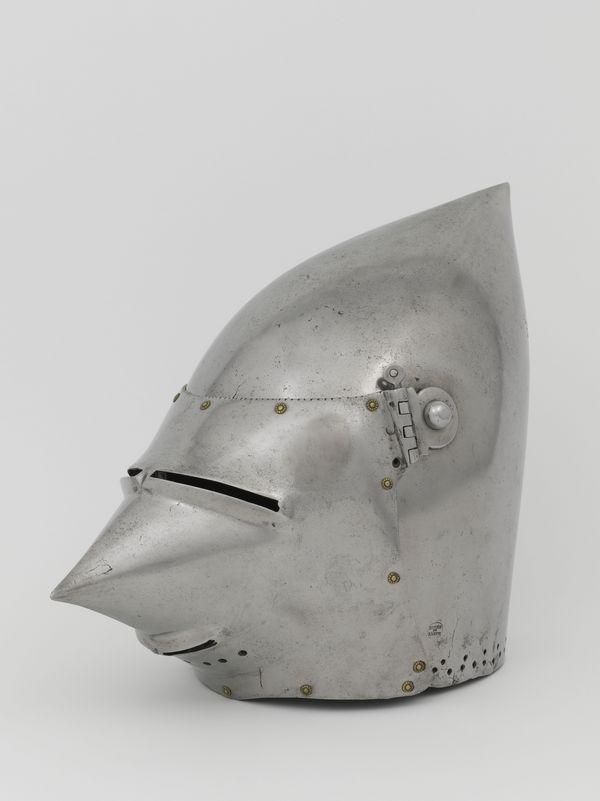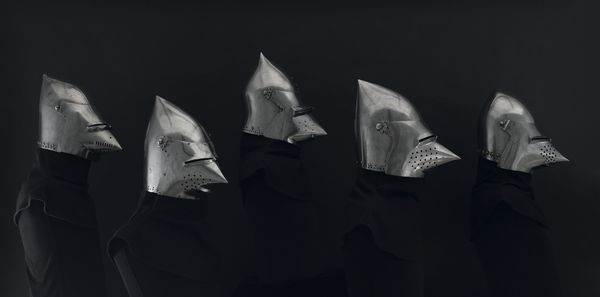
Hounskull bascinet
The bascinet was a form of head protection used in Europe between 1370 and 1430. It can be recognised by its "muzzle", which protected the face with a sharp tip. This unusual profile led 19th century French archaeologists to call it a "bec de passereau" (passerine beak) bascinet. Other terms were used abroad. In England, it was known as the "pig-faced bascinet" or the 'hounskull bascinet", while the Germans opted for the term "Hundsgugel" (dog's head bascinet).
About the work

(c) musée de l'Armée (Dist. RMN-Grand Palais) photo by Emilie Cambier
These pieces of head armour show the high level of skill achieved by late 14th century blacksmiths, when full-plated white body armour was in its infancy. Bascinets represented a major step forward in technique. The timbre, or helmet skull, had an arched shape and was made from a single sheet of metal. Like the sharp-tipped muzzle, it helped protect the knight from blows. The pivoting visor could be lifted so that he could get some fresh air and widen his field of vision in an instant. The ventilation holes were only made on the right-hand side, the side less exposed to attack.
This type of protection is relatively rare. The Musée de l'Armée still conserves and displays a number of remarkably well-preserved bascinets in its rich medieval collections.

(c) musée de l'Armée (Dist. RMN-Grand Palais) photo by Pascal Segrette
The series of holes pierced on the lower side of the timbre was where the mail camail was attached, a form of chain mail protecting the knight's throat and shoulders.

(c) musée de l'Armée (Dist. RMN-Grand Palais) photo by Emilie Cambier
Label
Date : About 1350-1380
Width : 0,20 m and Height : 0,29 m
Weight : 3,25 kg
Author : Unknown
Inventory no. : H 21
Materials : Wrought iron
Techniques : Polishing
History : From the collection of Prince Saltykov, acquired by Napoleon III in 1861. On display in Pierrefonds, then added to the Artillery Museum collections in 1880.
Place of creation : Western Europe